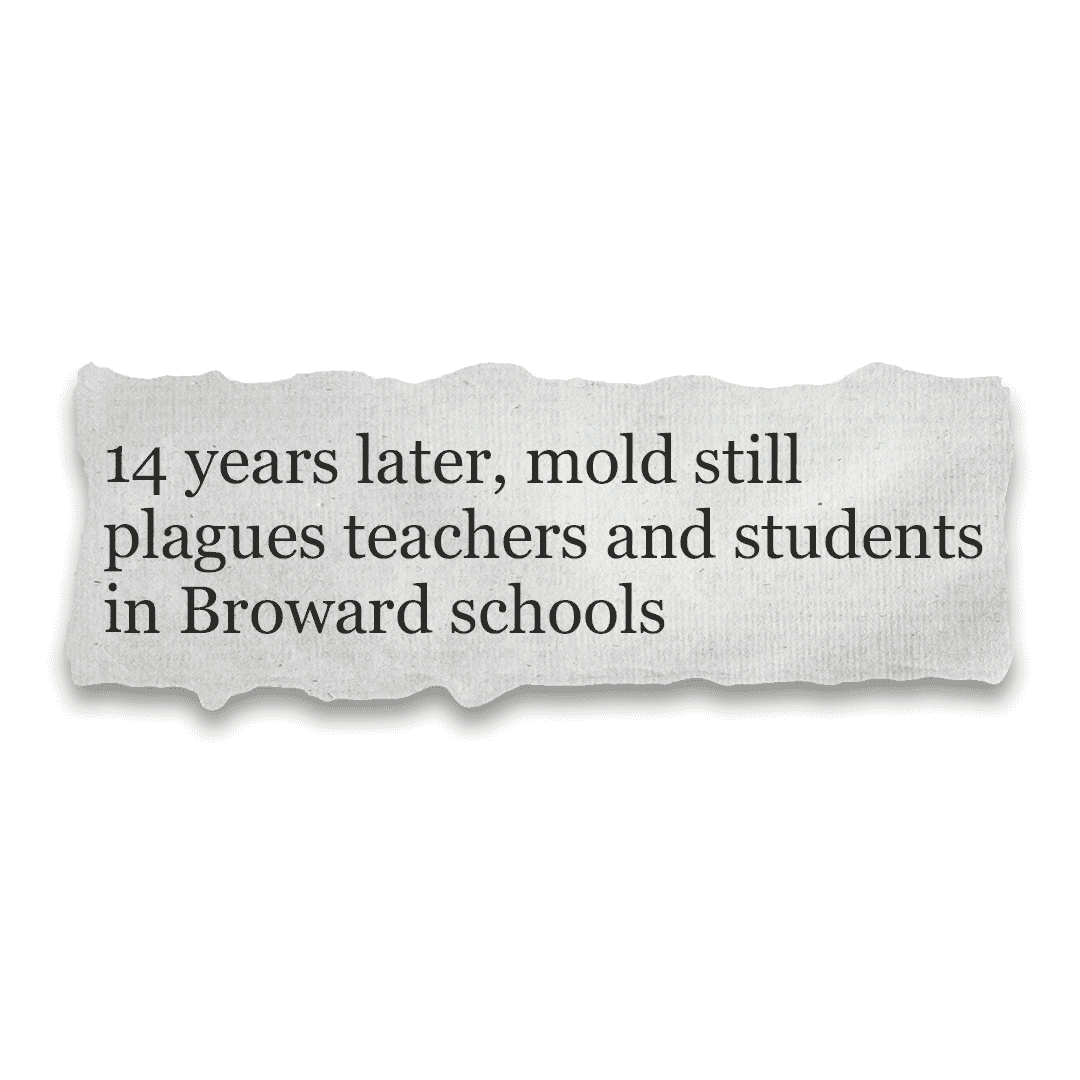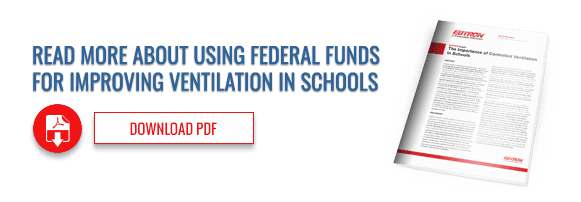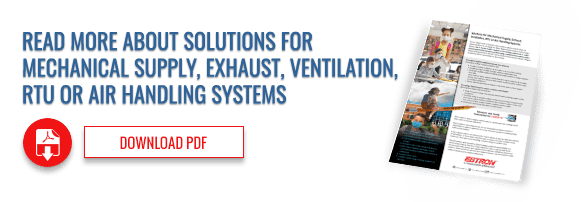Mold in schools is disruptive! It can create damage to the school building and property. Mold triggers asthma or other respiratory ailments and often shuts down schools forcing expensive remediation and displacement of students and teachers. A common problem in schools, it can be invisible when above ceilings or between walls, and doesn’t require a water leak to exist. All that is needed is moisture and a food source. If the cause is not determined, it will likely return.


Airflow control is an important tool for mold prevention
There are molds that can grow on almost anything including: wood, paper, carpet, foods, and insulation. Controlling moisture is the key to managing mold in schools.
According to the EPA, some moisture problems in schools have been linked to changes in building envelope tightness construction practices during the past twenty to thirty years. However, leaky school buildings also have the potential to create mold problems. This makes mechanical HVAC systems an important component in the prevention of mold growth. Problems are heightened in schools with delayed maintenance or insufficient maintenance.
WHERE MOLD COMES FROM
_____
Mold spores exist naturally in the environment and are abundantly around us. They are in search of a food source and require moisture and oxygen to grow. Once they find what they are looking for, the fungi will attach itself, reproduce, and even generate the moisture it needs to thrive. In fact, mold growth frequently occurs in low humidity environments. There only needs to be enough moisture to keep growth going.
It may start with a single event when the humidity gets out of control and/or a surface happens to be colder than the dew point, thereby allowing moisture to condensate upon it. There is the possibility that the indoor humidity is moderate, however, more humid summer air may leak through the building envelope and condense onto a cool surface. Similarly cold winter air can also create a condition that results in condensation. In some cases, this condensation may not be visible on the indoor material (food source), as it may be below the surface or within a wall.


HVAC IS INTEGRAL TO MOLD
_____
A properly operating HVAC system is important to preventing mold growth and spread. In humid climates it is important to properly condition ventilation air and remove moisture before it enters the occupied space. Moisture can also enter a building through doors, windows, and the envelope, if the building automation system (BAS) is not properly controlling the building pressure.
ASHRAE 62.1 Ventilation Standard has a 60°F limit on the indoor dew point and the EPA recommends below 55°F in order to prevent conditions favorable for mold growth. Sometimes good intentions lead to bad results. Such as, raising space temperature in an effort to save energy during unoccupied or vacation periods. Without consideration of ventilation or exhaust operation, removing humidity or maintaining a low dew point, this effort may easily create mold growth conditions. High moisture or dew point conditions can occur even in dry climates if the HVAC system isn’t sized or controlled properly.
A properly operating HVAC system should dry out the air and the food source. However, once mold exists and starts to dry out, it will release more airborne spores in an effort to survive. These spores will then be carried by the HVAC system. Therefore, it is important for the system to transport indoor airborne mold spores outdoors, recirculate through filters where spores can be captured, and to replace the indoor air with correct amount of filtered and conditioned outdoor air.
CONTROLLING AIRFLOW = HEALTHIER INDOORS
_____
Over-ventilation is a common cause of mold conditions because the HVAC equipment is unable to remove all the outdoor moisture in the ventilation air. Another common cause is not properly controlling building exhaust in conjunction with ventilation rates. Too much exhaust or exhaust systems operating when ventilation systems are not operating will result in negative pressure, poor IAQ, and the potential for mold formation.
Properly measuring airflow rates in and out of the building will enable the BAS control system to sequencing fans and dampers to ensure that these situations do not occur. If the proper conditions or operation cannot be maintained, the system should be setup to alarm so that corrective action can be taken. Ebtron has airflow measuring products that contain both humidity and temperature sensors to assist in an all in one solution. Learn more about Ebtron Solutions for Schools.

The Elementary and Secondary School Emergency Relief Fund (ESSERII) and the American Rescue Plan Act of 2021 allows for LEAs to use available funds for improvements, repairs, and upgrades to mechanical ventilation and control systems. Ventilation control is important mold prevention function.
Additional Resources Related to Mold in Schools
_____
Environmental Protection Agency
Design HVAC systems to manage air flow and control condensation. Controlling pressure in air conditioned buildings in hot, humid climates is crucial to controlling condensation in the enclosure.
Moisture Guidance
ASHRAE
Measure and limit the volume of ventilation and makeup air to the amount required for the application and that will in fact be dried effectively by the system’s dehumidification components.
Position Document on Mold and Moisture
Healthy Schools Network, Inc.
Many schools have plumbing problems, leaky roofs or poor ventilation systems, which can create ideal moisture conditions for molds to grow.





